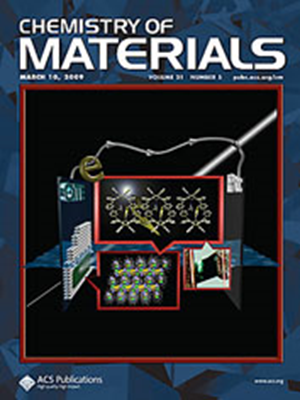In-Situ Study of Heterogeneous Crystal Growth of Gold Nanoparticles on Hematite Facets
IF 7.2
2区 材料科学
Q2 CHEMISTRY, PHYSICAL
引用次数: 0
Abstract
Although significant research has been conducted on metal nanoparticles, a notable gap persists in understanding the fundamental principles governing their crystallization and stability, particularly when deposited on heterogeneous supports. Most current studies focus on specific systems, such as single nanocrystalline facet, which limits the broader understanding of how these processes are influenced by various factors, such as interactions with the facet-dependent crystalline supports. Gaining deeper insights into these mechanisms could lead to the development of more robust and efficient catalytic systems, sensors, and nanomaterials for other advanced applications across various industries. To address this gap, our study focuses on the in-depth examination of the crystallization process of gold (Au) nanoparticles on hematite (104) and (001) facets through in situ transmission electron microscopy (TEM) observation. Our findings reveal the existence of three distinct crystal growth pathways in hematite-supported Au nanoparticles: Ostwald ripening, particle coalescence, and disordered intermediate-phase-mediated growth where particle coalescence plays a dominant role in the sintering process. Furthermore, analysis of crystal growth kinetics on different facets of hematite substrate highlights a facet-dependent behavior. Hematite (001) effectively stabilizes Au nanoparticles and suppresses their sintering more effectively than (104) facets. This enhanced stabilization is attributed to the lower surface energy and stronger interaction between Au and the hematite (001) facet. Density functional theory (DFT) calculations, in conjunction with molecular dynamics (MD) simulations, provide valuable insight into heterogeneous coarsening of Au nanoparticles on hematite. Our research significantly contributes to the understanding of facet-dependent growth of metal nanoparticles on hematite nanocrystals and offers guidelines for selecting hematite-supported heterogeneous catalysts.

纳米金在赤铁矿表面非均相晶体生长的原位研究
尽管对金属纳米粒子进行了大量研究,但在了解其结晶和稳定性的基本原理方面仍存在明显差距,尤其是沉积在异质支撑物上时。目前的大多数研究都侧重于特定系统,如单一纳米晶面,这限制了对这些过程如何受各种因素(如与晶面相关的晶体支撑物之间的相互作用)影响的更广泛理解。深入了解这些机理可以开发出更强大、更高效的催化系统、传感器和纳米材料,用于各行各业的其他先进应用。针对这一空白,我们的研究重点是通过原位透射电子显微镜(TEM)观察,深入研究金(Au)纳米粒子在赤铁矿(104)和(001)面上的结晶过程。我们的研究结果表明,赤铁矿支撑的金纳米粒子存在三种不同的晶体生长途径:奥斯特瓦尔德熟化、颗粒凝聚和无序中间相介导生长,其中颗粒凝聚在烧结过程中起主导作用。此外,对赤铁矿基底不同切面上晶体生长动力学的分析凸显了切面依赖行为。赤铁矿(001)面能有效稳定金纳米粒子,并能比(104)面更有效地抑制其烧结。这种增强的稳定性归因于较低的表面能以及金与赤铁矿(001)面之间较强的相互作用。密度泛函理论(DFT)计算与分子动力学(MD)模拟相结合,为赤铁矿上金纳米粒子的异质粗化提供了宝贵的见解。我们的研究极大地促进了人们对金属纳米颗粒在赤铁矿纳米晶体上的面依赖性生长的理解,并为选择赤铁矿支撑的异相催化剂提供了指导。
本文章由计算机程序翻译,如有差异,请以英文原文为准。
求助全文
约1分钟内获得全文
求助全文
来源期刊

Chemistry of Materials
工程技术-材料科学:综合
CiteScore
14.10
自引率
5.80%
发文量
929
审稿时长
1.5 months
期刊介绍:
The journal Chemistry of Materials focuses on publishing original research at the intersection of materials science and chemistry. The studies published in the journal involve chemistry as a prominent component and explore topics such as the design, synthesis, characterization, processing, understanding, and application of functional or potentially functional materials. The journal covers various areas of interest, including inorganic and organic solid-state chemistry, nanomaterials, biomaterials, thin films and polymers, and composite/hybrid materials. The journal particularly seeks papers that highlight the creation or development of innovative materials with novel optical, electrical, magnetic, catalytic, or mechanical properties. It is essential that manuscripts on these topics have a primary focus on the chemistry of materials and represent a significant advancement compared to prior research. Before external reviews are sought, submitted manuscripts undergo a review process by a minimum of two editors to ensure their appropriateness for the journal and the presence of sufficient evidence of a significant advance that will be of broad interest to the materials chemistry community.
 求助内容:
求助内容: 应助结果提醒方式:
应助结果提醒方式:


